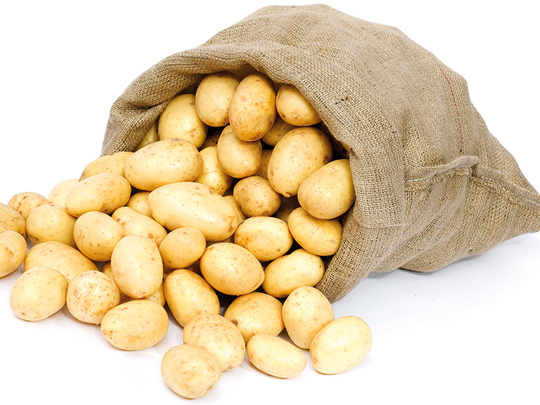
Washington: It was a small round object sent around the planet, and it changed the course of human history.
Call it “Spudnik.” It was a potato.
The potatoes, tomatoes, corn, peppers, cassava and other plants native to the Americas did more than enliven the cook pots of Europe, Africa and Asia. They transformed cultures, reshuffled politics and spawned new economic systems that then, in a globalising feedback loop, took root back in the New World as well.
It was a grand shuffling of organisms with results both great and disastrous: Malaria-fighting quinine from the South American cinchona tree aided European colonisation throughout the tropics; the ballast dumped in Virginia by ships picking up tobacco introduced earthworms to the mid-Atlantic. Diseases common in the Old World quickly devastated the indigenous populations in the New.
population boost in cold weather regions after potato came to Europe
“What happened after Columbus,” writes science journalist Charles Mann in “1493,” his book on the topic, “was nothing less than the forming of a single new world from the collision of two old worlds — three, if one counts Africa as separate from Eurasia.”
The potato alone gets credit for population booms in parts of northern Europe that paved the way for urbanisation and, in turn, fuelled the Industrial Revolution. Tobacco had such value that it was used as currency in some places. Some American foods became staples abroad, from the tomato in Italy and the cassava in Africa to the peppers that became the paprika of Hungary and the curries of India.
“There really was no spicy food in the world before the Columbian Exchange,” said Nancy Qian, an economics professor at Northwestern University who has studied how the back-and-forth flow of new foods, animals and germs reshaped the world.
Researchers don’t know how much use indigenous Americans made of the capsicum peppers that originated in Bolivia and Brazil. But as they spread around the globe, the zesty pods that are the ancestors of modern bell, cayenne and jalapeño peppers allowed cooks to conceal the tastes of foods that were still edible but going a bit off. Soon peppers would form the base of dishes around the warmer latitudes, from Vietnamese pho to Mexican salsa.
when Europeans figured out how to cultivate potatoes
By far the most consequential transfer of organisms, Qian said, was the introduction of unknown pathogens into the defenceless populations of the Americas. In the first century-and-a-half after Columbus, smallpox, measles, whooping cough, typhus and other infectious diseases killed up to 80 per cent of native people, according to demographer Noble David Cook. And when Europeans introduced sugar, cotton and other plantations to the Americas, they enslaved more than 12 million Africans to work them.
On the other side of the Atlantic, fewer cataclysmic shifts occurred when new species arrived. None had more impact than the potato, Qian said.
Before Columbus landed on Hispaniola, the European diet was a bland affair. In many northern climes, crops were largely limited to turnips, wheat, buckwheat and barely. Even so, when potatoes began arriving from America, it took a while for locals to realise that the strange lumps were, comparatively speaking, nutritional grenades loaded with complex carbohydrates, amino acids and vitamins.
“When [Sir Walter] Raleigh brought potatoes to the Elizabethan court, they tried to smoke the leaves,” Qian said.
Eventually, starting with a group of monks on Spain’s Canary Islands in the 1600s, Europeans figured out how to cultivate potatoes, which form a nutritionally complete — albeit monotonous — diet when combined with milk to provide vitamins A and D. The effects were dramatic, boosting populations in Ireland, Scandinavia, Ukraine and other cold-weather regions by up to 30 per cent, according to Qian’s research. The need to hunt declined — and, as more land became productive, so did conflicts over land.
Frederick the Great ordered Prussian farmers to grow them, and the potato moved to the Centre of European cultures from Gibraltar to Kiev. “Let the sky rain potatoes,” Shakespeare wrote in “The Merry Wives of Windsor.” Their portability made them ideal to transport into the growing cities, feeding the swelling population that would be needed for a factory labour force.
“It’s hard to imagine a food having a greater impact than the potato,” Qian said.
Cassava, which remains the foundation of many African diets, had a similar nutritional impact as it spread from the Americas. Sweet potatoes, too, proved hardy in flood-prone fields. In China, some scholars credit the sweet potato with reducing the frequent uprisings against emperors, whom peasants tended to blame when floods destroyed their rice crops.
Some of the most notable additions to global cuisine are nutritionally neutral: chocolate (made from cacao beans); vanilla (which was first processed to improve the flavour of chocolate); and the tomato, a native of the Andes that had been transported to Mexico. There, according to Mann, “native plant breeders radically transformed the fruits, making them bigger, redder, and, most important, more edible.” The result would transform the cuisine of Italy and bestow upon the world pizza, ketchup and the Bloody Mary.
“We don’t need them to survive,” Qian said. “But I don’t want to imagine a world without tomatoes and chocolate.”
— Washington Post












